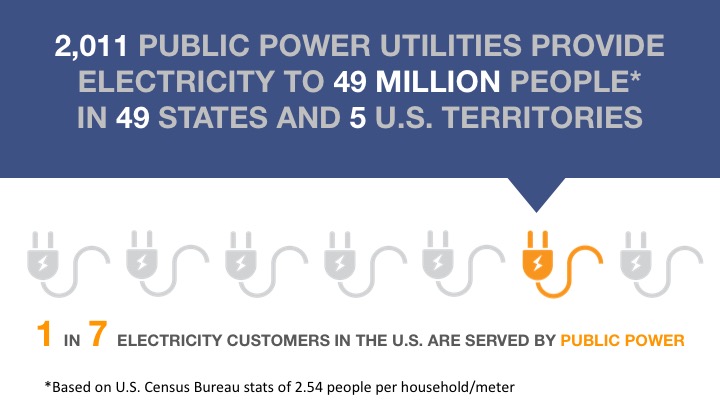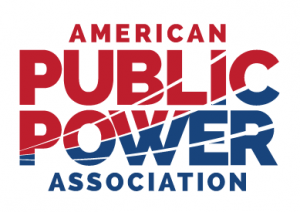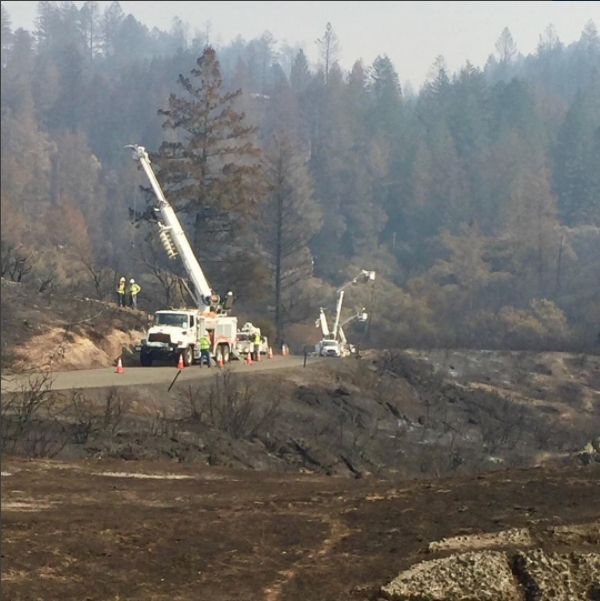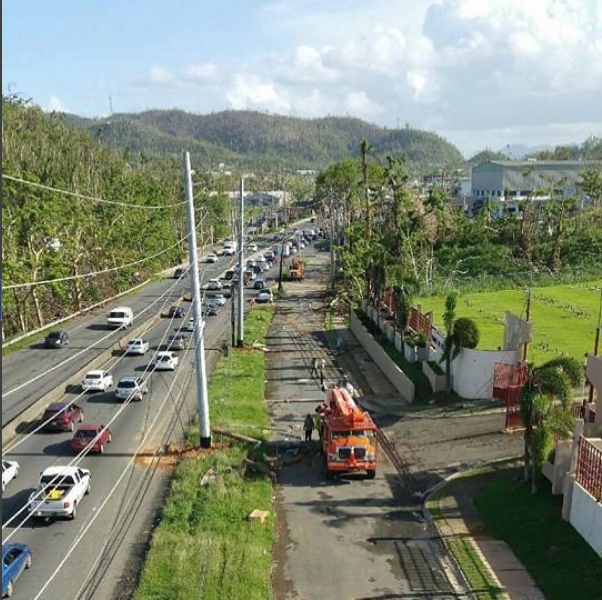Strategic Communications Boost Membership Value at the American Public Power Association
Trade associations exist to promote the interests and image of members, and there may be no association right now working harder to enhance members’ image than the American Public Power Association. Its communications department, headed by Vice President of Integrated Media and Communications Meena Dayak, has led a strategic rebranding of the association to emphasize what its members do — provide community-owned electric power for 2,000 towns and cities nationwide while creating content for utility members to share as their own, fielding ongoing media requests in times of disaster and calm, and producing a daily newsletter with original content.
We spent some time with Dayak to ask how the association’s integrated media and communications department supports public power and reinforces membership value.
Association Adviser: What is your role with the American Public Power Association?

Meena Dayak: I’ve worked with the association for a little over three years as the vice president for integrated media and communications. We are a team of 10 people managing external and internal communications, branding and media relations for public power. We spearhead various programs to raise awareness of public power. We manage our digital channels — website, social media, blogs, and publications. We publish a daily eNewsletter, Public Power Daily, and a monthly magazine, Public Power Magazine, plus a blog. We provide editorial and graphics services to all other departments in their efforts to communicate about the association’s products and services.
AA: What are your department’s specific communications goals?
MD: All of our communication goals align with the larger goals of the association. We finalized a three-year strategic plan at the end of 2015 that defines key goals across the organization. Our communications goals support this strategic plan — they don’t exist in isolation. We focus on members’ needs and priorities and try to help them be successful.
For example, one goal is to help members raise awareness of public power in their communities. We produce and distribute template resources like infographics, videos, PSAs, fact sheets and press releases that members can customize and use as their own. We tie in to hot topics and trends for certain seasons or months. Some of our member utilities do not have the staff or budget to develop these resources on their own, and they find our materials very helpful.

Another goal is to keep members informed about advocacy priorities, new technologies, and business and operations trends. We conduct an annual reader poll to determine the topics of highest interest and ensure that we develop robust content on these topics that we then push out through multiple channels to reach members where they are.
The quality and reach of our publications has made them a sought-after advertising source. So we have some revenue goals, which we’ve been able to achieve and surpass, with the help of our advertising sales partner, Naylor.
In 2018, we as an association will determine what we want to accomplish over the coming three to five years. We’ll continue to align our communications goals to that master plan because that’s how we can continue to be effective.
AA: You recently went through a rebranding process, can you tell us more?
MD: Rebranding the association was part of our current strategic plan to raise awareness of public power — not many people know what it really is. I remember when I was getting ready to start this job, and my daughter, then 11, said “Do we have to get public power now, whatever that means?”
To raise awareness, we decided to move away from being one more acronym inside the [DC] Beltway and to highlight the PUBLIC POWER part of the full name that has served us well for more than 75 years.
Our members are not-for-profit electric utilities owned by the communities they serve and usually run by local or state governments. Community is at the heart of what they do, but we hadn’t highlighted that as much as we could have. So our tagline “Powering Strong Communities” evolved and has become a key part of our new brand.
We went back to our roots and encouraged emphasis on community in all communications. Community represents the essence of what our members do and what we do for our members. As an association, we promote community among members to help them learn from each other so they in turn can offer their best to their communities.
On the heels of our rebranding, we dove into a massive web redesign effort. Our new website was launched on September 20 and reflects the focus on community while better telling our story and making content more accessible and easy to find. We are already seeing increased engagement and response and hope to keep improving and enhancing our digital voice.


AA: How did you decide what direction to take with this rebranding?
MD: The direction of the rebranding was completely driven by research. We conducted a national survey of about 1,600 randomly selected end-use customers that our members serve to determine what they knew or didn’t know — and wanted to know — about their electric utility.
We shared the results of this customer research with our members and surveyed them to see what they needed from us to help close the gaps in customer awareness.
We conducted focus groups with members, partners inside the Beltway, media, policymakers and think tank professionals. Some of these individuals knew the American Public Power Association and others didn’t, but all offered perspectives on our strengths and weaknesses as a brand.
It took us about six months to process all the research findings and distill them into actionable results. We developed a few creative concepts and tested them among members and stakeholders. Throughout the rebranding process we engaged senior staff and our board members to get their valuable input and ensure buy-in once the new brand was adopted.
AA: What have been some of the benefits of rebranding?
MD: We’re better able to tell our member story — that public power is owned by communities to serve communities. Rebranding has significantly advanced the goal we had to raise awareness of public power and the value it offers.
AA: Have there been any drawbacks to rebranding?
MD: No drawbacks. It was great that our new brand built on our strengths and did not involve reinventing our association. But adopting a new brand requires a culture change in some ways. It’s hard for staff and for those who do know us to let go of the old ways — such as referring to us by an acronym. That culture change takes time. Our department continues to be supportive and issue gentle reminders to ease the transition.
AA: Tell us about your media relations strategy.
MD: I’ve focused on brand journalism, using the rich content we develop and publish on our platforms to fuel our external media outreach. Our news team may identify and write a story about a cool member program that we then use to pitch mainstream media. We encourage our subject matter experts to blog on key issues so we can tout their expertise and offer them up for media interviews.
We also leverage our social media presence and reach to connect with external media. Social media helps us stay informed about what media outlets are paying attention to. In this sense, our media relations works in tandem with the media itself. We especially use Twitter to push out stories, monitor trends and build relationships.
We respond immediately to all media inquiries from outlets small and large. Even if we can’t directly comment on an issue, we try to be helpful and connect reporters to other resources. This responsiveness helps us build relationships for the long term and helps establish us as a go-to resource. Being as responsive and helpful as you can is a good basic rule of media relations.
We also equip our members with talking points and template materials for local media outreach on key issues. We encourage them to call on us to weigh in from the national perspective when needed.
AA: How often do you reach out to media with content?
MD: We reach out to media proactively when we have relevant content that we know they will be interested in. Our outreach could be driven by advocacy priorities, by what’s going on in Congress, or by new action on the regulatory front. We also reach out when we have member stories that demonstrate innovation and the spirit of community.
For example, one of our member utilities serves the Navajo Nation — spread across Arizona, Utah and New Mexico — where there are still about 15,000 families that have never been connected to electricity. It’s shocking to think of something like that in 2017, but it’s true! Our member, the Navajo Tribal Utility Authority, recently connected 3,000 families for the first time and changed lives! That’s a wonderful story that we wrote about in our publications and pitched to external media with great success.
Our members may not have the resources to stop and tell their story. Our ability to amplify their good work helps them gain goodwill and trust from the communities they serve.
AA: How do you source so much content?
MD: Our content comes from different sources. There are developments relating to energy in all branches of federal government that we need to report on. We work to inform our members about how the changing legislative and regulatory landscape affects them. We address current trends and technology and talk about what our association is doing for members. We also tap into the knowledge of the many experts on our staff and board.
The best source of content is members themselves. One of our goals is to help members learn from each other. When we find out about cool stuff they’re doing, we share it. Learning how one utility set up a community solar farm or a battery storage unit helps other utilities glean concrete lessons and plan their own programs. Highlighting these case studies is also a good way to tell the world about the innovative, community-focused work our members do.
We keep reader interests top of mind, break down complex topics, and strive to make content accessible to all audiences.
AA: Tell us about your social media team.
MD: Our social media director is really good at engaging key staff across the organization to amplify our social media content. He curates content, packages it for social media engagement, considers the demographics, and monitors metrics continuously to figure out what works and what doesn’t on social media. We also encourage members to get active on social media and provide training, tips and tools.
AA: What tools do you use to manage your social media program?
MD: We use Hootsuite and the built-in analytics of each social media channel. We have someone monitoring and responding on all social media channels every day. When there are major events or disasters, we go into crisis response mode – we are pretty much on 24/7.
AA: What kind of planning does your team put into crisis communications?
MD: We have an association-wide plan that is activated when crisis strikes. Our communications team members coordinate closely with each other, with senior leadership, and with our engineering and operations team, which often leads the crisis response effort for the association.
We support member efforts as needed — amplifying what they do in terms of crisis response, or providing resources and consulting if they need help. Our news team reports on crisis response efforts through our daily newsletter.

We also work closely with the federal government and with other energy industry associations to ensure unity of message and share critical information on a daily basis.
AA: Does public power offer manpower to help with disaster response?
MD: We coordinate a national Mutual Aid Network that acts like a matchmaking service. We field requests for help and match them to utilities that can send crews and equipment to support the disaster response effort. Mutual aid has provided significant help across the country in the wake of many disasters over the years.

AA: What kinds of feedback do you get on your communications?
MD: We watch metrics – email open and click rates, social media engagement, and website traffic. We keep tabs on what people are reading and sharing. We use a clipping service to monitor our media coverage and we keep track of all media inquiries. We conduct an annual reader survey to gauge how our publications are doing and how we can continuously improve. I’m glad to say that we generally hear good things because news and analysis are perceived as being among the most valuable benefits of membership. Members and other stakeholders have said they’re pleased with the depth and breadth of our coverage.
Members have been very appreciative of getting tools and templates they can share in their newsletters, social media, etc. to raise awareness of public power and its key benefits. We usually get qualitative feedback on this and also monitor replication and sharing by tracking the hashtags (like #PublicPower) that we encourage members to use.
AA: What keeps you up at night?
MD: From a communications perspective, there is a lot of noise in our daily lives, and it’s a challenge for us to get through to members and for our members to get through to customers. Everyone suffers from information overload. How do we make our messages meaningful, and how do we make them stand out? It’s also a challenge to get members to fully tap into member benefits.
I’m a big believer in talking to people directly to understand their needs and cater to their interests. Most of all, we want members to know our association is here for them, to help them survive and thrive in a fast-changing world.

